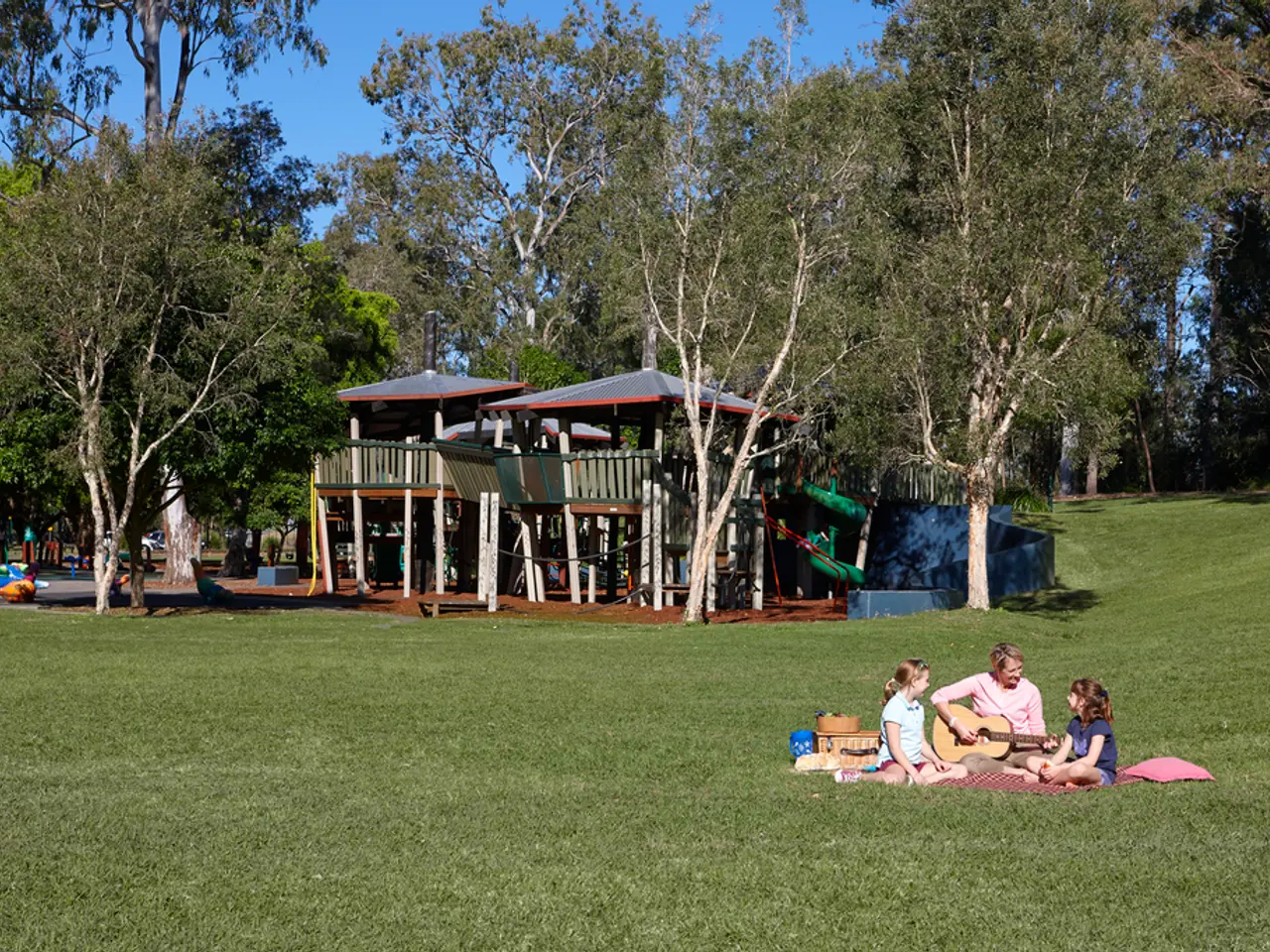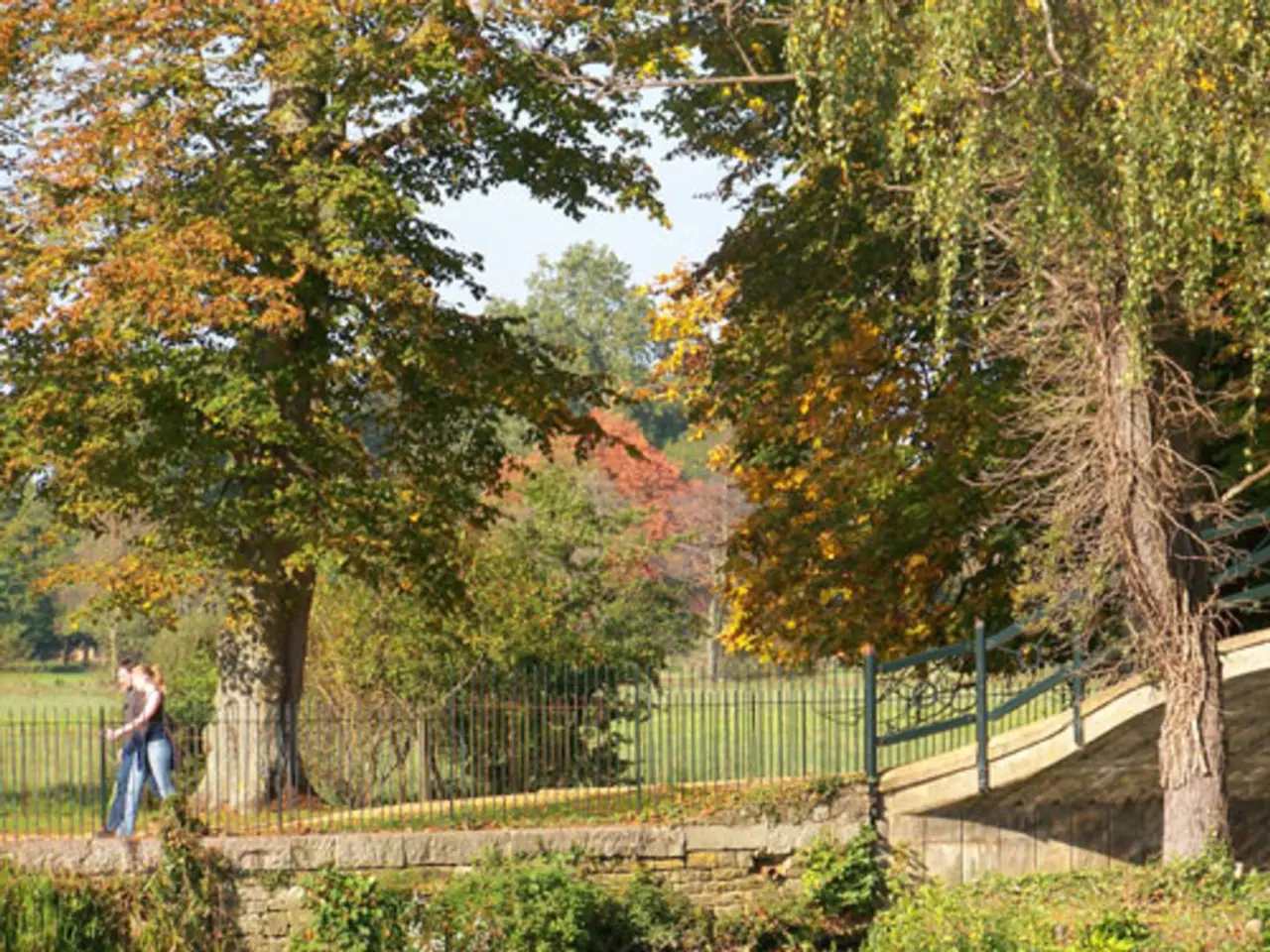Technique for Eliminating Invasive Ground Vegetation without Harming Surrounding Plants
In the ongoing battle against invasive ground cover plants, a combination of non-chemical, physical, and cultural methods offers the most effective solutions for managing these unwanted invaders without causing harm to desired plants.
Manual removal, especially after rain when soil is soft, is an efficient way to control invasive ground cover plants, particularly young ones. By removing the entire root system, regrowth can be prevented, even from small root fragments [1]. For deep-rooted invasives, careful digging is essential.
Mechanical cutting, achieved through regular mowing or cutting to remove flowers and seed heads, disrupts the reproductive cycle of invasives, weakening them over time without significantly affecting nearby plants [1].
Mulching, using organic materials such as bark, dried leaves, cardboard, or newspaper, plays a crucial role in controlling invasive ground cover plants. By blocking light, mulch prevents invasive seeds from germinating while improving soil structure and moisture retention. Simultaneously, mulch protects desirable plants and suppresses weed growth [2].
Barriers and buffer plantings can also contribute to the fight against invasive ground cover plants. Physical barriers like trenches or root barriers along property lines limit invasive root spread, while dense rows of native or non-invasive plants act as a living barrier, blocking invasives from creeping into desired areas [3].
Weed-blocking fabrics, carefully placed to avoid harming nearby desirable plants, can prevent new shoots without the use of chemicals. After cutting invasives flush with the ground, covering the area with such fabric can be an effective solution [4].
Soil management and hoeing are additional strategies for controlling invasive ground cover plants. Shallow hoeing removes small annual weeds without disturbing soil deeply, preventing more weed seeds from reaching the surface. Maintaining healthy soil and dense desirable plant cover naturally crowds out invasives [2].
When chemical intervention is necessary, care must be taken to avoid harming desired plants. Paint On Herbicides, containing a 25.1 percent glyphosate solution, can be used to kill ground cover plants, but it's crucial to avoid painting desired plants. A ready-to-use 0.96 percent glyphosate product can be used for Spray On Herbicides, wetting all plant parts [5].
When using Spray On Herbicides, it's important not to soak the protective paper or cardboard with spray. For waxy-leaved ground cover plants, a ready-to-use 5 percent glyphosate herbicide might be necessary. Applying Paint On Herbicides to woody-stemmed invasive ground cover plants is most effective in late summer through fall [6].
It's essential to remember that regular removal of invasive ground cover plants can eventually control them. When using herbicides, immediate washing away of accidental application to desired plants with plenty of clean water is crucial. These methods work best when applied consistently and in combination, tailored to the specific invasive species and site conditions [1][2][3][4].
By adopting these strategies, homeowners and gardeners can protect native wildlife, desired plants, and the environment while gradually reducing invasive ground cover plant populations.
Gardening techniques, such as manual removal and mechanical cutting, are vital for home-and-garden enthusiasts seeking to combat invasive ground cover plants in their garden. Mulching, using natural materials, helps control these invaders by preventing seed germination and improving soil health.




